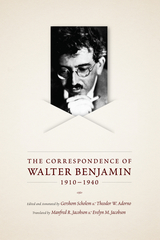
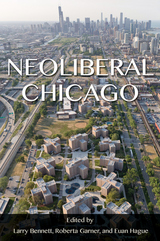
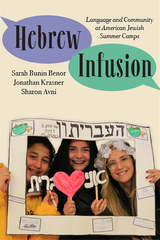
Each summer, tens of thousands of American Jews attend residential camps, where they may see Hebrew signs, sing and dance to Hebrew songs, and hear a camp-specific hybrid language register called Camp Hebraized English, as in: “Let’s hear some ruach (spirit) in this chadar ochel (dining hall)!” Using historical and sociolinguistic methods, this book explains how camp directors and staff came to infuse Hebrew in creative ways and how their rationales and practices have evolved from the early 20th century to today. Some Jewish leaders worry that Camp Hebraized English impedes Hebrew acquisition, while others recognize its power to strengthen campers’ bonds with Israel, Judaism, and the Jewish people. Hebrew Infusion explores these conflicting ideologies, showing how hybrid language can serve a formative role in fostering religious, diasporic communities. The insightful analysis and engaging descriptions of camp life will appeal to anyone interested in language, education, or American Jewish culture.

Providing in-depth accounts and close critical examinations of nine of Wiseman’s films—Titicut Follies, High School, Basic Training, Essene, Juvenile Court, Primate, Welfare, Canal Zone, and The Store—thissecond edition features a new introduction, a revised and updated filmography, and an updated bibliography.
No book on documentary film has ever analyzed in such detail the work of a single filmmaker. In impeccable close readings of his films, Tom Benson and Carolyn Anderson explore how Frederick Wiseman has elaborated his widely admired sensibility.
A special feature is an extended chapter on the legal difficulties encountered by Wiseman’s first documentary, Titicut Follies, an unflinching depiction of conditions in the Massachusetts Correctional Institution at Bridgewater. The Commonwealth of Massachusetts took Wiseman to court, seeking to prevent the exhibition of Titicut Follies. In New York State, three judges refused to issue an injunction against the film. In Massachusetts, the film was the subject of a sensational series of legislative hearings and a court trial, in which the principals gave very different stories of the conditions and terms under which the film had been negotiated and produced.
Wiseman, himself an attorney, exchanged charges and countercharges with Massachusetts Attorney General Elliot Richardson, and the controversy split the civil liberties community. Judge Harry Kalus, calling Titicut Follies "a nightmare of ghoulish obscenities," not only ruled for the Commonwealth but ordered that the film be destroyed. On appeal, the Massachusetts Supreme Judicial Court modified the Kalus ruling, allowing the film to be seen only by professional audiences. Titicut Follies became the only American film whose exhibition is restricted for reasons other than obscenity or national security.
After Titicut Follies, Wiseman went on to become a major independent documentary producer. Many of his films have been shown on public television in the United States and at film festivals around the world. The films are widely admired and often highly controversial. Wiseman has developed a unique cinematic rhetoric that draws from both the documentary and fiction traditions to describe American institutions: a high school, basic training, a monastery, a juvenile court, a primate research center, a welfare agency, the Panama canal zone, and a department store. Benson and Anderson scrutinize each of these films, record the reactions of some of his subjects and audiences, and present the heretofore neglected contributions of his four cinematographers: John Marshall, Richard Leiterman, William Brayne, and John Davey.
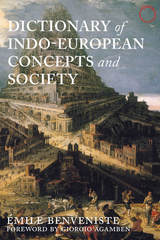
This book has famously inspired a wealth of thinkers, including Roland Barthes, Claude Lévi-Strauss, Pierre Bourdieu, Jacques Derrida, Umberto Eco, Giorgio Agamben, François Jullien, and many others. In this new volume, Benveniste’s masterpiece on the study of language and society finds new life for a new generation of scholars. As political fictions continue to separate and reify differences between European, Middle Eastern, and South Asian societies, Benveniste reminds us just how historically deep their interconnections are and that understanding the way our institutions are evoked through the words that describe them is more necessary than ever.
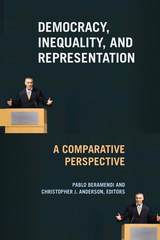
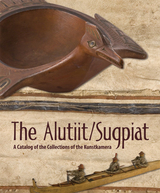
This beautifully photographed book catalogs the collection of nearly five hundred Alutiiq cultural items held by the Peter the Great Museum of Anthropology and Ethnography, or the Kunstkamera, in St. Petersburg, Russia. Gathered between 1780 and 1867, many of the artifacts are composed of fur, feathers, gut, hair, and other delicate materials, which prevent their transport for display or study.

This new book presents a synthesis of Tennessee history from earliest times to the present. Striking a balance of social, economic, and political perspectives, it moves from frontier times to early statehood, antebellum society through the Civil War to Reconstruction, then establishes Tennessee's place in the New South and in modern times. Full coverage is devoted to the Civil Rights era and to events in the later years of this century, including environmental issues. The text deals honestly with slavery and segregation and also corrects shortcomings of previous works by placing the state's history in the context of national issues and events within the South.
The authors introduce readers to famous personages like Andrew Jackson and Austin Peay, often using quotations to give them voice. They also tell stories of ordinary people and their lives to show how they are an integral part of history. Sidebars throughout the text highlight stories of particular interest, and reading lists at the end of chapters further enhance the text's utility.
Tennesseans and Their History was written for students needing a basic introduction to state history and to general readers looking for a lively introduction to Tennessee's past. Written to be entertaining as well as instructive, it makes the state's
history relevant to a new generation of Tennesseans.
The Authors: Paul H. Bergerson is professor of history at the University of Tennessee and the editor of The Papers of Andrew Johnson.
Stephen V. Ash is associate professor of history at the University of Tennessee and author of Middle Tennessee Transformed, 1860-1870: War and Peace in the Upper South.
Jeanette Keith is associate professor of history at Bloomsburg University and the author of Country People in the New South: Tennessee's Upper Cumberland.
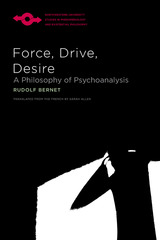
Rereading the long history of metaphysics (or at least a few of its key moments) in light of psychoanalytic inquiries into the nature and function of drive and desire also allows for a rewriting of the history of philosophy. Specifically, it allows Bernet to bring to light a different history of metaphysics, one centered less on Aristotelian substance (ousia) and more on the concept of dunamis—a power or potentiality for a realization toward which it strives with all its might. Relating human drives to metaphysical forces also bears fruit for a renewed philosophy of life and subjectivity.
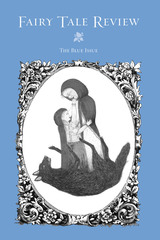

For more than four decades, Charles Bernstein has been at the forefront of experimental poetry, ever reaching for a radical poetics that defies schools, periods, and cultural institutions. The Kinds of Poetry I Want is a celebration of invention and includes not only poetry but also essays on aesthetics and literary studies, interviews with other poets, autobiographical sketches, and more.
At once a dialogic novel, long poem, and grand opera, The Kinds of Poetry I Want arrives amid renewed attacks on humanistic expression. In his polemical, humorous style, Bernstein faces these challenges head-on and affirms the enduring vitality and attraction of poetry, poetics, and literary criticism.
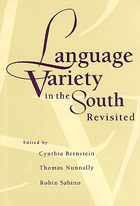
Top linguists from diverse fields address language varieties in the South.
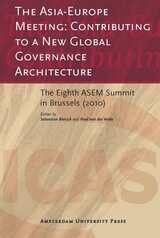
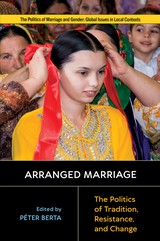

Every year hundreds of students from all over the world come to study in Utrecht. On the occasion of the 375th anniversary of the founding of Utrecht University, foreign students and alumni were invited to reflect on Dutch culture as they had experienced it in their university years there. This book collects the best of the essays they wrote; the result is a unique and fascinating contribution to the study of Dutch culture. These essays offer not only an intimate portrait of the students’ experiences, but also a fresh perspective on the remarkable, frustrating, and fascinating features of Dutch culture.
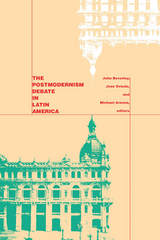
This collection explores the Latin American engagement with postmodernism, less to present a regional variant of the concept than to situate it in a transnational framework. Recognizing that postmodernism in Latin America can only inaccurately be thought of as having traveled from an advanced capitalist "center" to arrive at a still dependent neocolonial "periphery," the contributors share the assumption that postmodernism is itself about the dynamics of interaction between local and metropolitan cultures in a global system in which the center-periphery model has begun to break down. These essays examine the ways in which postmodernism not only designates the effects of this transnationalism in Latin America, but also registers the cultural and political impact on an increasingly simultaneous global culture of a Latin America struggling with its own set of postcolonial contingencies, particularly the crisis of its political left, the dominance of neoliberal economic models, and the new challenges and possibilities opened by democratization.
With new essays on the dynamics of Brazilian culture, the relationship between postmodernism and Latin American feminism, postmodernism and imperialism, and the implications of postmodernist theory for social policy, as well as the text of the Declaration from the Lacandon Jungle of the Zapatatista National Liberation Army, this expanded edition of boundary 2 will interest not only Latin Americanists, but scholars in all disciplines concerned with theories of the postmodern.
Contributors. Xavier Albó, José Joaquín Brunner, Fernando Calderón, Enrique Dussel, Néstor García Canclini, Martín Hopenhayn, Neil Larsen, the Latin American Subaltern Studies Group, Norbert Lechner, María Milagros López, Raquel Olea, Aníbal Quijano, Nelly Richard, Carlos Rincón, Silviano Santiago, Beatriz Sarlo, Roberto Schwarz, and Hernán Vidal



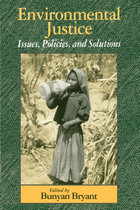
In Environmental Justice, leading thinkers of the environmental justice movement take a direct look at the failure of "top down" public policy to effectively deal with issues of environmental equity.
The book provides a startling look at pressing social and environmental problems and charts a course for future action. Among the topics considered are: the history of the social justice movement the role of the professional in working with community groups methods of dealing with environmental problems at the international level participatory national policy for environmental education, energy, industrial development, and housing and sustainable development.
Contributors include Robert Bullard, Deeohn Ferris, Tom B.K. Goldtooth, David Hahn-Baker, Beverly Wright, Ivette Perfecto, Patrick West, and others.
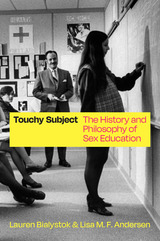
In the United States, sex education is more than just an uncomfortable rite of passage: it's a political hobby horse that is increasingly out of touch with young people’s needs. In Touchy Subject, philosopher Lauren Bialystok and historian Lisa M. F. Andersen unpack debates over sex education, explaining why it’s worth fighting for, what points of consensus we can build upon, and what sort of sex education schools should pursue in the future.
Andersen surveys the history of school-based sex education in the United States, describing the key question driving reform in each era. In turn, Bialystok analyzes the controversies over sex education to make sense of the arguments and offer advice about how to make educational choices today. Together, Bialystok and Andersen argue for a novel framework, Democratic Humanistic Sexuality Education, which exceeds the current conception of “comprehensive sex education” while making room for contextual variation. More than giving an honest run-down of the birds and the bees, sex education should respond to the features of young people’s evolving worlds, especially the digital world, and the inequities that put some students at much higher risk of sexual harm than others. Throughout the book, the authors show how sex education has progressed and how the very concept of “progress” remains contestable.
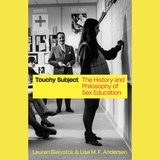
A case for sex education that puts it in historical and philosophical context.
In the United States, sex education is more than just an uncomfortable rite of passage: it's a political hobby horse that is increasingly out of touch with young people’s needs. In Touchy Subject, philosopher Lauren Bialystok and historian Lisa M. F. Andersen unpack debates over sex education, explaining why it’s worth fighting for, what points of consensus we can build upon, and what sort of sex education schools should pursue in the future.
Andersen surveys the history of school-based sex education in the United States, describing the key question driving reform in each era. In turn, Bialystok analyzes the controversies over sex education to make sense of the arguments and offer advice about how to make educational choices today. Together, Bialystok and Andersen argue for a novel framework, Democratic Humanistic Sexuality Education, which exceeds the current conception of “comprehensive sex education” while making room for contextual variation. More than giving an honest run-down of the birds and the bees, sex education should respond to the features of young people’s evolving worlds, especially the digital world, and the inequities that put some students at much higher risk of sexual harm than others. Throughout the book, the authors show how sex education has progressed and how the very concept of “progress” remains contestable.
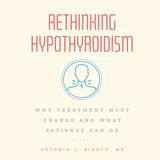
In this primer for patients, their families, and their doctors, a leading physician and scientist explains why the standard treatment for hypothyroidism fails many—and offers an empowering call for change.
Hypothyroidism, also commonly referred to as Hashimoto’s disease, affects millions in the United States alone. It occurs when the thyroid—the butterfly-shaped gland that sits in your neck right above the front of your shirt collar—malfunctions or after thyroid surgery, causing thyroid hormone levels in circulation to drop below normal. Thus, treatment is aimed at bringing these hormone levels back to normal. This is done with daily tablets of thyroxine or T4. Because hypothyroidism is so common, we likely know someone who is on this type of medication. While most patients respond well to this standard treatment, about ten to twenty percent (some two to three million individuals in the United States) are far from living a typical life. They exhibit “foggy brain”—low energy, confusion, and poor memory. Many doctors have shrugged off their complaints, believing these symptoms to be unrelated to the thyroid disease. In Rethinking Hypothyroidism, Dr. Antonio C. Bianco, a physician and a scientist who has studied hypothyroidism and thyroid hormones for decades, offers an accessible overview of the disease’s treatment and the role of big pharma in shaping it, making the case that the current approach is failing many patients. But more than this, Bianco calls for alternatives to improve lives, and he equips patients and their families with the tools to advocate for other treatments.
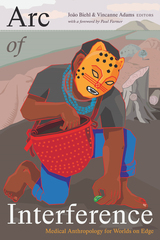
Contributors. Vincanne Adams, João Biehl, Davíd Carrasco, Lawrence Cohen, Jean Comaroff, Robert Desjarlais, Paul Farmer, Marcia Inhorn, Janis H. Jenkins, David S. Jones, Salmaan Keshavjee, Arthur Kleinman, Margaret Lock, Adriana Petryna

Thomas J Billard and Silvio Waisbord curate essays from a wide range of specialties within the study of communication. Aimed at scholars and students alike, the contributors use approaches from critical meditations to case studies to how-to guides as they explore the possibilities of seeing shared knowledge not as a gift to be granted but as an imperative urging readers to address the problems of the world. Throughout the volume, the works show that a pivot to ideas of scholarship as public service is already underway in corners of communication studies across the country.
Visionary and provocative, Public Scholarship in Communication Studies proposes a needed reconsideration of knowledge and a roadmap to its integration with community.
Contributors: Elaine Almeida, Becca Beets, Thomas J Billard, Danielle K. Brown, Aymar Jean Christian, Stacey L. Connaughton, Paula Gardner, Larry Gross, Amy Jordan, Daniel Kreiss, Rachel Kuo, Susan Mancino, Shannon C. McGregor, Philip M. Napoli, Todd P. Newman, Srividya Ramasubramanian, Chad Raphael, Sue Robinson, Silvio Waisbord, Yidong Wang, and Holley Wilkin
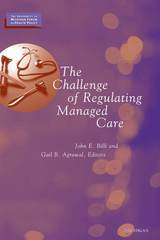
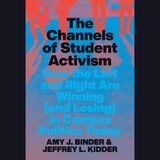
This is an auto-narrated audiobook edition of this book.
An eye-opening analysis of collegiate activism and its effects on the divisions in contemporary American politics.
The past six years have been marked by a contentious political atmosphere that has touched every arena of public life, including higher education. Though most college campuses are considered ideologically progressive, how can it be that the right has been so successful in mobilizing young people even in these environments?
As Amy J. Binder and Jeffrey L. Kidder show in this surprising analysis of the relationship between political activism on college campuses and the broader US political landscape, while liberal students often outnumber conservatives on college campuses, liberal campus organizing remains removed from national institutions that effectively engage students after graduation. And though they are usually in the minority, conservative student groups have strong ties to national right-leaning organizations, which provide funds and expertise, as well as job opportunities and avenues for involvement after graduation. Though the left is more prominent on campus, the right has built a much more effective system for mobilizing ongoing engagement. What’s more, the conservative college ecosystem has worked to increase the number of political provocations on campus and lower the public’s trust in higher education.
In analyzing collegiate activism from the left, right, and center, The Channels of Student Activism shows exactly how politically engaged college students are channeled into two distinct forms of mobilization and why that has profound consequences for the future of American politics.

In the 1960s, art patrons Dominique and Jean de Menil founded an image archive showing the ways that people of African descent have been represented in Western art from the ancient world to modern times. Highlights from the image archive, accompanied by essays written by major scholars, appeared in three large-format volumes, consisting of one or more books, that quickly became collector's items. A half-century later, Harvard University Press and the Du Bois Institute are proud to have republished five of the original books and to present five completely new ones, extending the series into the twentieth century.
The Impact of Africa, the first of two books on the twentieth century, looks at changes in the Western perspective on African art and the representation of Africans, and the paradox of their interpretation as simultaneously "primitive" and "modern." The essays include topics such as the new medium of photography, African influences on Picasso and on Josephine Baker's impression of 1920s Paris, and the influential contribution of artists from the Caribbean and Latin American diasporas.
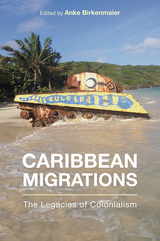
With mass migration changing the configuration of societies worldwide, we can look to the Caribbean to reflect on the long-standing, entangled relations between countries and areas as uneven in size and influence as the United States, Cuba, Hispaniola, Puerto Rico, and Jamaica. More so than other world regions, the Caribbean has been characterized as an always already colonial region. It has long been a key area for empires warring over influence spheres in the new world, and where migration waves from Africa, Europe, and Asia accompanied every political transformation over the last five centuries. In Caribbean Migrations, an interdisciplinary group of humanities and social science scholars study migration from a long-term perspective, analyzing the Caribbean's "unincorporated subjects" from a legal, historical, and cultural standpoint, and exploring how despite often fractured public spheres, Caribbean intellectuals, artists, filmmakers, and writers have been resourceful at showcasing migration as the hallmark of our modern age.


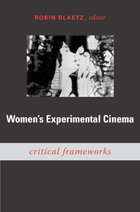
The contributors examine the work of Marie Menken, Joyce Wieland, Gunvor Nelson, Yvonne Rainer, Carolee Schneemann, Barbara Rubin, Amy Greenfield, Barbara Hammer, Chick Strand, Marjorie Keller, Leslie Thornton, Abigail Child, Peggy Ahwesh, Su Friedrich, and Cheryl Dunye. The essays highlight the diversity in these filmmakers’ forms and methods, covering topics such as how Menken used film as a way to rethink the transition from abstract expressionism to Pop Art in the 1950s and 1960s, how Rubin both objectified the body and investigated the filmic apparatus that enabled that objectification in her film Christmas on Earth (1963), and how Dunye uses film to explore her own identity as a black lesbian artist. At the same time, the essays reveal commonalities, including a tendency toward documentary rather than fiction and a commitment to nonhierarchical, collaborative production practices. The volume’s final essay focuses explicitly on teaching women’s experimental films, addressing logistical concerns (how to acquire the films and secure proper viewing spaces) and extending the range of the book by suggesting alternative films for classroom use.
Contributors. Paul Arthur, Robin Blaetz, Noël Carroll, Janet Cutler, Mary Ann Doane, Robert A. Haller, Chris Holmlund, Chuck Kleinhans, Scott MacDonald, Kathleen McHugh, Ara Osterweil, Maria Pramaggiore, Melissa Ragona, Kathryn Ramey, M. M. Serra, Maureen Turim, William C. Wees
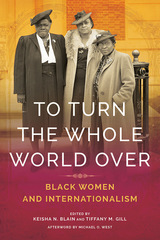
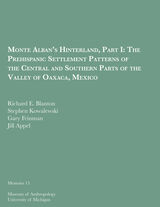

A potent re-examination of America’s history of public disinvestment in mass transit.
Many a scholar and policy analyst has lamented American dependence on cars and the corresponding lack of federal investment in public transportation throughout the latter decades of the twentieth century. But as Nicholas Dagen Bloom shows in The Great American Transit Disaster, our transit networks are so bad for a very simple reason: we wanted it this way.
Focusing on Baltimore, Atlanta, Chicago, Detroit, Boston, and San Francisco, Bloom provides overwhelming evidence that transit disinvestment was a choice rather than destiny. He pinpoints three major factors that led to the decline of public transit in the United States: municipal austerity policies that denied most transit agencies the funding to sustain high-quality service; the encouragement of auto-centric planning; and white flight from dense city centers to far-flung suburbs. As Bloom makes clear, these local public policy decisions were not the product of a nefarious auto industry or any other grand conspiracy—all were widely supported by voters, who effectively shut out options for transit-friendly futures. With this book, Bloom seeks not only to dispel our accepted transit myths but hopefully to lay new tracks for today’s conversations about public transportation funding.
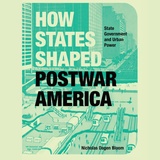
The history of public policy in postwar America tends to fixate on developments at the national level, overlooking the crucial work done by individual states in the 1960s and ’70s. In this book, Nicholas Dagen Bloom demonstrates the significant and enduring impact of activist states in five areas: urban planning and redevelopment, mass transit and highways, higher education, subsidized housing, and the environment. Bloom centers his story on the example set by New York governor Nelson Rockefeller, whose aggressive initiatives on the pressing issues in that period inspired others and led to the establishment of long-lived state polices in an age of decreasing federal power. Metropolitan areas, for both better and worse, changed and operated differently because of sustained state action—How States Shaped Postwar America uncovers the scope of this largely untold story.
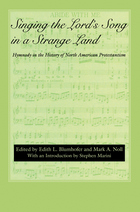
Music and song are important parts of worship, and hymns have long played a central role in Protestant cultural history. This book explores the ways in which Protestants have used and continue to use hymns to clarify their identity and define their relationship with America and to Christianity. Representing seven groups—Baptists, Presbyterians, Lutherans, Mennonites, Holiness, Hispanics, and Evangelicals—the nine essays reveal how hymns have helped immigrants to establish new identities, contributed to the body of worship resources, and sustained ethnic identity.
Individual essays address the music of the Old-Fashioned Revival Hour, America’s longest running and most successful independent radio program; singing among Swedish evangelicals in America; the German hymn tradition as transformed by Mennonite immigrants; the ways hymnody reinforces themes of the Wesleyan holiness movement; the history of Mercer’s Cluster (1810), a southern hymnal that gave voice to slaves, women, and native Americans; and the Presbyterian hymnal tradition in Canada formed by Scottish immigrants.
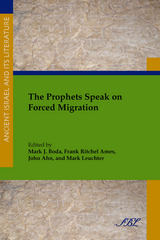
A valuable resource with productive avenues for inquiry
In this collection of essays dealing with the prophetic material in the Hebrew Bible, scholars explore the motifs, effects, and role of forced migration on prophetic literature. Contributors focus on the study of geographical displacement, social identity ethics, trauma studies, theological diversification, hermeneutical strategies in relation to the memory, and the effects of various exilic conditions in order to open new avenues of study into the history of Israelite religion and early Judaism.
Features:
- An introductory essay that presents a history of scholarship and an overview of the collection
- Ten essays examining the rhetoric of exile in the prophets
- Current, thorough approaches to the issues and problems related to historical and cultural features of exile in biblical literature
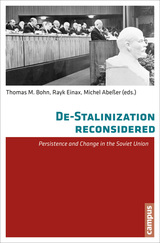
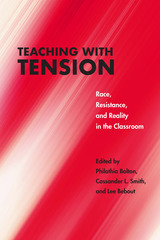
Drawing together personal reflection, pedagogical strategies, and critical theory, Teaching with Tension offers concrete examinations that will foster student learning. The essays are organized into three thematic sections: "Teaching in Times and Places of Struggle" examines the dynamics of teaching race during the current moment, marked by neoconservative politics and twenty-first century freedom struggles. "Teaching in the Neoliberal University" focuses on how pressures and exigencies of neoliberalism (such as individualism, customer-service models of education, and online courses) impact the way in which race is taught and conceptualized in college classes. The final section, "Teaching How to Read Race and (Counter)Narratives," homes in on direct strategies used to historicize race in classrooms comprised of millennials who grapple with race neutral ideologies. Taken together, these sections and their constitutive essays offer rich and fruitful insight into the complex dynamics of contemporary race and ethnic studies education.

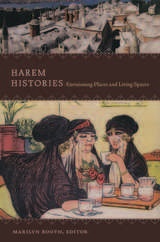
Contributors. Asma Afsaruddin, Orit Bashkin, Marilyn Booth, Nadia Maria El Cheikh, Julia Clancy-Smith, Joan DelPlato, Jateen Lad, Nancy Micklewright, Yaseen Noorani, Leslie Peirce, Irvin Cemil Schick, A. Holly Schissler, Heghnar Zeitlian Watenpaugh
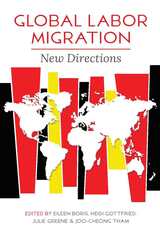
Global Labor Migration presents new multidisciplinary, transregional perspectives on issues surrounding global labor migration. The essays go beyond disciplinary boundaries, with sociologists, ethnographers, legal scholars, and historians contributing research that extends comparison among and within world regions. Looking at migrant workers from the late nineteenth century to the present day, the contributors illustrate the need for broader perspectives that study labor migration over longer timeframes and from wider geographic areas. The result is a unique, much-needed collection that delves into one of the world’s most pressing issues, generates scholarly dialogue, and proposes cutting-edge research agendas and methods.
Contributors: Bridget Anderson, Rutvica Andrijasevic, Katie Bales, Jenny Chan, Penelope Ciancanelli, Felipe Barradas Correia Castro Bastos, Eileen Boris, Charlie Fanning, Judy Fudge, Jorge L. Giovannetti-Torres, Heidi Gottfried, Julie Greene, Justin Jackson, Radhika Natarajan, Pun Ngai, Bastiaan Nugteren, Nicola Piper, Jessica R. Pliley, Devi Sacchetto, Helen Sampson, Yael Schacher, Joo-Cheong Tham, and Matt Withers

This volume brings together Pierre Bourdieu’s highly original writings on language and on the relations among language, power, and politics. Bourdieu develops a forceful critique of traditional approaches to language, including the linguistic theories of Saussure and Chomsky and the theory of speech-acts elaborated by Austin and others. He argues that language should be viewed not only as a means of communication but also as a medium of power through which individuals pursue their own interests and display their practical competence.
Drawing on the concepts that are part of his distinctive theoretical approach, Bourdieu maintains that linguistic utterances or expressions can be understood as the product of the relation between a “linguistic market” and a “linguistic habitus.” When individuals use language in particular ways, they deploy their accumulated linguistic resources and implicitly adapt their words to the demands of the social field or market that is their audience. Hence every linguistic interaction, however personal or insignificant it may seem, bears the traces of the social structure that it both expresses and helps to reproduce.
Bourdieu’s account sheds fresh light on the ways in which linguistic usage varies according to considerations such as class and gender. It also opens up a new approach to the ways in which language is used in the domain of politics. For politics is, among other things, the arena in which words are deeds and the symbolic character of power is at stake.
This volume, by one of the leading social thinkers in the world today, represents a major contribution to the study of language and power. It will be of interest to students throughout the social sciences and humanities, especially in sociology, politics, anthropology, linguistics, and literature.
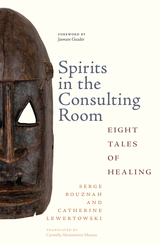
Drawn from two decades of their experience with transcultural mediation, Spirits in the Consulting Room tells the stories of eight patients—mainly migrants—and their families. Each chapter focuses on a different patient, and Christelle, Djibril, Moncef, Alhassane, Jacinthe, Amy, Cyril, Alice, and Pierre leap off the page as distinct people with unique situations. Together, these chapters reveal how patients’ comprehension of their symptoms is shaped by their cultural background, while recounting the challenges of translating that into terms the doctors can grasp.
The book shows how trained transcultural mediators can help to redress the power imbalance between doctors and the migrants they treat, providing patients with advocates who respect the authority of their background and experiences and don’t just take the side of the medical professionals. The groundbreaking insights modeled in this book can be applied to any medical situation where doctors and patients find themselves speaking different languages.
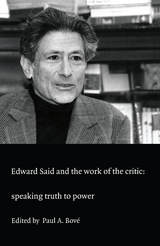
In two separate interviews, Said himself comments on a variety of topics, among them the response of the American Jewish community to his political efforts in the Middle East. Yet even as the Palestinian struggle finds a central place in his work, it is essential—as the contributors demonstrate—to see that this struggle rests on and gives power to his general "critique of colonizers" and is not simply the outgrowth of a local nationalism. Perhaps more than any other person in the United States, Said has changed how the U.S. media and American intellectuals must think about and represent Palestinians, Islam, and the Middle East. Most importantly, this change arises not as a result of political action but out of a potent humanism—a breadth of knowledge and insight that has nourished many fields of inquiry. Originally a special issue of boundary 2, the book includes new articles on minority culture and on orientalism in music, as well as an interview with Said by Jacqueline Rose.
Supporting the claim that the last third of the twentieth century can be called the "Age of Said," this collection will enlighten and engage students in virtually any field of humanistic study.
Contributors. Jonathan Arac, Paul A. Bové, Terry Cochran, Barbara Harlow, Kojin Karatani, Rashid I. Khalidi, Sabu Kohsu, Ralph Locke, Mustapha Marrouchi, Jim Merod, W. J. T. Mitchell, Aamir R. Mufti, Jacqueline Rose, Edward W. Said, Gayatri Chakravorty Spivak, Lindsay Waters

“I will make bold to say that Bowden is America’s most alarming writer. Just when you think you’ve heard it all you learn you haven’t in the most pungent manner possible. . . . With The Charles Bowden Reader in hand you get a taste of it all, and any literate resident or visitor should want this book. It will lead them back to a close, alarming reading of the entire oeuvre. It is to ride in a Ferrari without brakes. There’s lots of oxygen but no safe way to stop. . . . Read him at your risk. You have nothing to lose but your worthless convictions about how things are.” —Jim Harrison, from the foreword
From his first book, Killing the Hidden Waters, to his most recent, Murder City: Cuidad Juárez and the Global Economy's New Killing Fields, Charles Bowden has been sounding an alarm about the rapacious appetites of human beings and the devastation we inflict on the natural world we arrogantly claim to possess. His own corner of the world, the desert borderlands between the United States and Mexico, is Bowden's prime focus, and through books, magazine articles, and newspaper journalism he has written eloquently about key issues roiling the border—drug-related violence that is shredding civil society, illegal immigration and its toll on human lives and the environment, destruction of fragile ecosystems as cities sprawl across the desert and suck up the limited supplies of water.
This anthology gathers the best and most representative writing from Charles Bowden's entire career. It includes excerpts from his major books—Killing the Hidden Waters, Blue Desert, Desierto: Memories of the Future, Blood Orchid,Blues for Cannibals, A Shadow in the City, Inferno, Exodus, and Some of the Dead Are Still Breathing—as well as articles that appeared in Esquire, Harper's, Mother Jones, and other publications. Imbued with Bowden's distinctive rhythm and lyrical prose, these pieces also document his journey of exploration—a journey guided, in large part, by the question posed in Some of the Dead Are Still Breathing: "How do we live a moral life in a culture of death?" This is no metaphor; Bowden is referring to the people, history, animals, and ecosystems that are being extinguished in the onslaught of twenty-first-century culture.
The perfect introduction to his work, The Charles Bowden Reader is also essential for those who know him well and want to see the whole panorama of his passionate, intense writing.
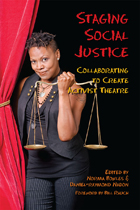
Fringe Benefits, an award-winning theatre company, collaborates with schools and communities to create plays that promote constructive dialogue about diversity and discrimination issues. Staging Social Justice is a groundbreaking collection of essays about Fringe Benefits’ script-devising methodology and their collaborations in the United States, Australia, Canada and the United Kingdom. The anthology also vividly describes the transformative impact of these creative initiatives on participants and audiences. By reflecting on their experiences working on these projects, the contributing writers—artists, activists and scholars—provide the readerwith tools and inspiration to create their own theatre for social change.
“Contributors to this big-hearted collection share Fringe Benefits’ play devising process, and a compelling array of methods for measuring impact, approaches to aesthetics (with humor high on the list), coalition and community building, reflections on safe space, and acknowledgement of the diverse roles needed to apply theatre to social justice goals. The book beautifully bears witness to both how generative Fringe Benefits’ collaborations have been for participants and to the potential of engaged art in multidisciplinary ecosystems more broadly.”—Jan Cohen-Cruz, editor of Public: A Journal of Imagining America
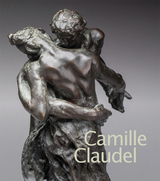
Camille Claudel (1864–1943) was among the most daring and visionary sculptors of the late nineteenth century. Although much attention has been paid to her tumultuous life—her affair with her mentor, Auguste Rodin; the premature end to her career; her thirty-year institutionalization in an asylum—her art remains little known outside of France. Memorably praised by critic Octave Mirbeau in 1895 as “a revolt of nature: a woman of genius,” Claudel was celebrated for her brilliance during a time when women sculptors were rare.
Featuring more than two hundred photographs along with contributions from leading experts, this publication accompanies the first comprehensive survey of Claudel’s oeuvre in nearly forty years. With essays exploring the many facets of her life, work, and reception; a biography; commentary by American sculptor Kiki Smith; and a fascinating appendix of documents written by Claudel and her contemporaries, this volume reevaluates the artist’s work on its own merits and repositions her legacy within a more complex genealogy of modernism.
This volume, copublished with The Art Institute of Chicago, accompanies an exhibition on view at The Art Institute of Chicago from October 7, 2023, to February 19, 2024 and at the J. Paul Getty Museum at the Getty Center from April 2 to July 21, 2024.
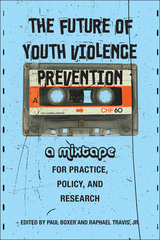
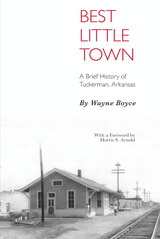
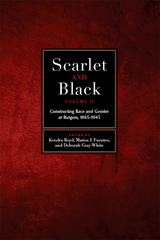
To learn more about the work of the Committee on Enslaved and Disenfranchised Population in Rutgers History, visit the project's website at http://scarletandblack.rutgers.edu
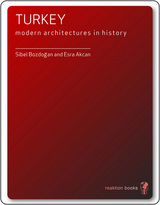
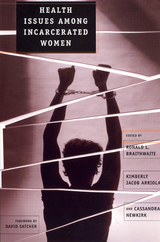
The female inmate population in the United States has exploded in the past two decades, increasing nearly six-fold. The U.S. correctional system, however, has not expanded its health care to provide for this growing population of women. This comprehensive reader addresses the physical and mental needs of women inmates and suggests that they cannot be properly treated unless their lifestyles before, during, and after incarceration are considered.
This book abounds with statistics that outline the unique needs of the female inmate population. For instance, a significant proportion of female inmates suffer physical and sexual violence before serving time. Incarcerated teenagers are more likely than others from their age group to have engaged in behaviors that increased their risk for contracting sexually transmitted diseases like HIV. Because African American women are more likely than their counterparts to encounter prison time, their needs warrant specific attention.
Bringing together twenty original essays, this volume will be invaluable for lobbyists and policy makers as well as for graduate students and faculty in the fields of criminal justice and public health.
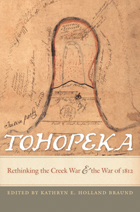
New attention to material culture and documentary and archaeological records fills in details, adds new information, and helps disabuse the reader of outdated interpretations.
Susan M. Abram / Kathryn E. Holland Braund/Robert P. Collins / Gregory Evans Dowd /

William Bartram, author of Travels through North and South Carolina, Georgia, East and West Florida, the Cherokee Country, the Extensive Territories of the Muscogulees, or Creek Confederacy, and the Country of the Chactaws, was colonial America’s first native born naturalist and artist, and the first author in the modern genre of writers who portrayed nature through personal experience as well as scientific observation. His book, first published in 1791, was based on his journeys through southern Indian nations and Britain’s southern colonies in the years just prior to the American Revolution and provides descriptions of the natural and cultural environments of what would soon become the American South. Scholars and general readers alike have long appreciated Bartram’s lush, vivid prose, his clarity of observation and evident wonder at the landscapes he traversed, and his engagement with the native nations whose lands he traveled through.
The Attention of a Traveller: Essays on William Bartram’s “Travels” and Legacy offers an interdisciplinary assessment of Bartram’s influence and evolving legacy, opening new avenues of research concerning the flora, fauna, and people connected to Bartram and his writings. Featuring 13 essays divided into five sections, contributors to the volume weave together scholarly perspectives from geology, art history, literary criticism, geography, and philosophy, alongside the more traditional Bartram-affiliated disciplines of biology and history. The collection concludes with a comprehensive treatment of the book as a material historical artifact.

The missing link between the international trade regime and human rights has become one of the key concerns of critics of the WTO. The World Trade Forum 2001 at the World Trade Institute in Berne provided a unique framework for considering the manifold issues relevant to this topic. This book goes beyond listing the different arguments in favor of or against globalization and offers recommendations to the international community for possible reforms so as to better account for the human rights interests affected by the process of globalization.
Frederick M. Abbott is the Edward Ball Eminent Scholar Professor of International Law at Florida State University College of Law. He is the editor of China in the World Trading System: Defining the Principles of Engagement (1998) and author of The International Intellectual Property System: Commentary and Materials (with Thomas Cottier and Francis Gurry, 1999).
Christine Breining-Kaufmann is Professor of Law at the University of Zurich and Senior Research Fellow as well as a member of the Board of the World Trade Institute in Berne. Her publications include Hunger als Rechtsproblem: Völkerrechtliche Aspekte eines Rechtes auf Nahrung (1991) and Globalization and Labour Rights: The Conflicting Relationship between Core Labour Rights and International Economic Institutions (2006).
Thomas Cottier is Managing Director of the World Trade Institute and Professor of Law at the University of Berne. He has co-edited the previous four volumes of the World Trade Forum series.

The papers in this volume are based on a 2006 Princeton University symposium in honor of Glen W. Bowersock on the occasion of his retirement from the faculty of the Institute for Advanced Study. Here a distinguished international group of ancient historians explores the classical antiquity that Bowersock has given us over a scholarly career of almost fifty years.
The topics offered in East and West range throughout the ancient world from the second century BCE to late antiquity, from Hellenistic Greece and Republican Rome to Egypt and Arabia, from the Second Sophistic to Roman imperial discourse, from Sulla’s self-presentation in his memoirs to charitable giving among the Manichaeans in Egypt.
This collection of essays represents the first attempt to take in Glen Bowersock’s well-developed scholarly interests as a whole. The contributors open up new avenues that often run well beyond the conventional geographical and temporal boundaries of the Greco-Roman Mediterranean, leading to a host of fresh insights into antique thought and life.

In 1968, in search of a better world, a young person flees her country and ends up in Switzerland, the land of hard cheese. There she’s told not to talk nonsense, or not to “talk cheese,” as they say in the local dialect. Home is where you can grumble, but here you have to be grateful. Her new environs seem unwieldy, aloof, and she rebels against this host country that insists on her following its rules, that won’t let her be herself. But as an interpreter, she meets many others who have ended up here—petty criminals, depressives, hustlers, refugees, victims of exploitation, and others who have gone out of their way to assimilate, people who share a hope that they can make something new of their lives. Gradually she learns to experience the richness of exile and foreignness, to build bridges between cultures. A brilliantly written novel about the search for identity between assimilation and resistance, Irena Brežná’s The Thankless Foreigner is a significant addition to the important literature of immigrant experience.
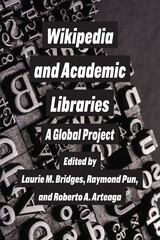
Wikipedia and Academic Libraries: A Global Project contains 19 chapters by 52 authors from Brazil, Canada, Hong Kong, Ireland, Kyrgyzstan, Mexico, Netherlands, Nigeria, Scotland, Spain, and the United States. The chapters in this book are authored by both new and longtime members of the Wikimedia community, representing a range of experiences.
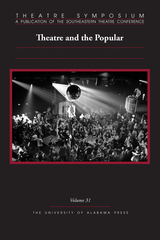
The essays in the thirty-first volume of Theatre Symposium traverse disciplinary boundaries to explore what constitutes the “popular” in theater and performance in an increasingly frenetic and mediated landscape. Amid the current resurgence of populist discourse and the enduring impact of popular culture, this volume explores what is considered popular, how that determination gets made, and who makes it. The answers to these questions shape the structures and systems of performance in an interaction that is reciprocal, intricate, and multifaceted. Productions often succeed or fail based on their ability to align with what is popular—sometimes productively, sometimes clumsily, sometimes brazenly, and sometimes tragically.
In our current moment, what constitutes the popular profoundly affects the real world politically, economically, and socially. Controversies about the electoral college system hinge on the primacy of the “popular” vote. Streaming services daily update lists of their most popular content and base future decisions on opaque measures of popularity. Social media platforms broadcast popular content across the globe, triggering new products, social activism, and political revolutions.
The contributors to this volume engage with a range of contemporary and historical examples and argue with clarity and acuity the interplay of performance and the popular. Theatre and performance deeply engage with the popular at every level—from audience response to box office revenue. The variety of methodologies and sites of inquiry showcased in this volume demonstrates the breadth and depth of the popular and the importance of such work to understanding our present moment onstage and off.
CONTRIBUTORS
Mysia Anderson / Chase Bringardner / Elizabeth M. Cizmar / Chelsea Curto / Janet M. Davis / Tom Fish / Kyla Kazuschyk / Sarah McCarroll / Eleanor Owicki / Sunny Stalter-Pace / Chelsea Taylor / Chris Woodworth
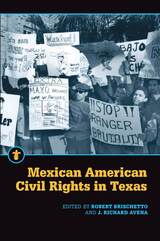
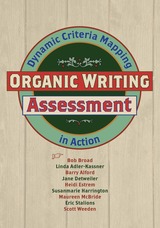
For the authors of Organic Writing Assessment, the DCM experience provided not only an authentic assessment of their own programs, but a nuanced language through which they can converse in the always vexing, potentially divisive realm of assessment theory and practice. Of equal interest are the adaptations these writers invented for Broad’s original process, to make DCM even more responsive to local needs and exigencies.
Organic Writing Assessment represents an important step in the evolution of writing assessment in higher education. This volume documents the second generation of an assessment model that is regarded as scrupulously consistent with current theory; it shows DCM’s flexibility, and presents an informed discussion of its limits and its potentials.
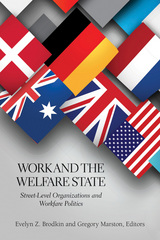
Work and the Welfare State places street-level organizations at the analytic center of welfare-state politics, policy, and management. This volume offers a critical examination of efforts to change the welfare state to a workfare state by looking at on-the-ground issues in six countries: the US, UK, Australia, Denmark, Germany, and the Netherlands.
An international group of scholars contribute organizational studies that shed new light on old debates about policies of workfare and activation. Peeling back the political rhetoric and technical policy jargon, these studies investigate what really goes on in the name of workfare and activation policies and what that means for the poor, unemployed, and marginalized populations subject to these policies. By adopting a street-level approach to welfare state research, Work and the Welfare State reveals the critical, yet largely hidden, role of governance and management reforms in the evolution of the global workfare project. It shows how these reforms have altered organizational arrangements and practices to emphasize workfare’s harsher regulatory features and undermine its potentially enabling ones.
As a major contribution to expanding the conceptualization of how organizations matter to policy and political transformation, this book will be of special interest to all public management and public policy scholars and students.
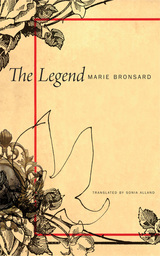
Egocentric and domineering, Bronsard’s grandmother was once a vibrant and sensual beauty. In Indochina at the end of the Second World War, she thrived in the social life of the French colony, but her young soldier husband sought a quieter existence, finding solace in the companionship of their adolescent daughter, Bronsard’s mother. The consequences of this choice reverberate throughout the family. But far from being an airing of grievance or dirty laundry, Bronsard’s memoir has the air of catharsis—here, the pain, secrets, and comic moments of Bronsard’s family are remembered with gentle humor, understanding, and affection. A wry irony tempers emotion, and it is in these pages that the author, at last, finds it possible to name the woman of the legend and perhaps bring her grandmother a measure of peace.
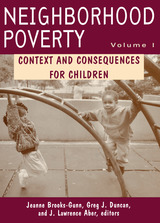
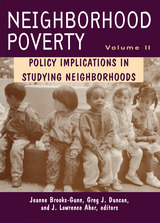

In the treatment of neurocritical disease states, pharmacotherapeutic strategies are increasingly relevant. Neuropharmacotherapy in Critical Illness is the first book that provides this information in a high-yield format for the busy healthcare provider. Edited and authored by leading experts in the field, this book provides practitioners with clinical pearls on neuropharmacology, dosing strategies, monitoring, adverse events, drug interactions, and evidence-based pharmacotherapy.
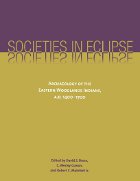
After establishing the distribution of prehistoric and historic populations from the northeastern Appalachian forests to the southern trans-Mississippian prairies, the contributors consider the archaeological and cultural record of several specific groups, including Mohawk and Onondaga, Monacan, Coosa, and Calusa. For each, they present new evidence of cultural changes prior to European contact, including populations movements triggered by the Little Ice Age (AD 1550–1770), shifting exchange and warfare networks, geological restriction of effective maize subsistence, and use of empty hunting territories as buffers between politically unstable neighbors. The contributors also trace European influences, including the devastation caused by European-introduced epidemics and the paths of European trade goods that transformed existing Native American-exchange networks.
While the profound effects of European explorers, missionaries, and traders on Eastern Woodlands tribes cannot be denied, the archaeological evidence suggests that several indigenous societies were already in the process of redefinition prior to European contact. The essays gathered here show that, whether formed in response to natural or human forces, cultural change may be traced through archaeological artifacts, which play a critical role in answering current questions regarding cultural persistence.
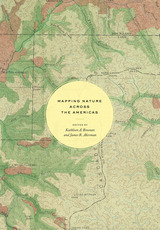
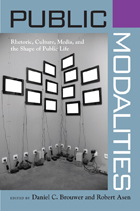
This book explores the ways that scholars, journalists, politicians, and citizens conceive of “the public” or “public life,” and how those entities are defined and invented. For decades, scholars have used the metaphors of spheres, systems, webs, or networks to talk about, describe, and map various practices. This volume proposes a new metaphor—modalities—to suggest that publics are forever in flux, and much more fluid and dynamic than the static models of systems or spheres would indicate—especially in the digital age, where various publics rapidly evolve and dissipate.
Contributors to the volume—employing approaches from the fields of communication studies, English, sociology, psychology, and history—explore a broad range of texts and artifacts that give rise to publics, and discuss what they reveal about conceptualizations of social space. By focusing on process in public engagement, these scholars highlight questions of how people advance their interests and identities, and how they adapt to situational constraints.
Bringing together scholars in rhetorical, cultural, and media studies, this collection of new case studies illustrates a modalities approach to the study of publics. These case studies explore the implications of different ways of forming publics, including alternative means of expression (protests, culture jamming); the intersection of politics and consumerism (how people express their identities and interests through their consumer behavior); and online engagement (blogs as increasingly important public fora). In doing so, they raise important questions of access, community, and political efficacy
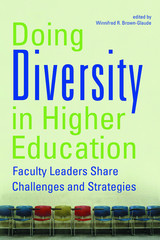
The rich variety of colleges and universities included provides a wide array of models that faculty can draw upon to inspire institutional change.

The result is Karaoke Idols, a close ethnography of life at a karaoke bar that reveals just what we’re doing when we take up the mic—and how we shape our identities, especially in terms of gender, ethnicity, and class, through performances in everyday life. Marrying a comprehensive introduction to the history of public singing and karaoke with a rich analysis of karaoke performers and the community that their shared performances generate, Karaoke Idols is a book for both the casual reader and the scholar, and a fascinating exploration of our urge to perform and the intersection of technology and culture that makes it so seductively easy to do so.
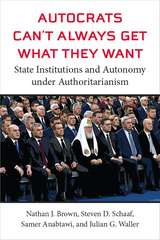
In Autocrats Can’t Always Get What They Want, the authors find that when state bodies form strong institutional patterns and forge links with key allies both inside the state and outside of it, they can define interests and missions that are different from those at the top of the regime. By focusing on three such structures (parliaments, constitutional courts, and official religious institutions), the book shows that the degree of autonomy realized by a particular part of the state rests on how thoroughly it is institutionalized and how strong its links are with constituencies. Instead of viewing authoritarian governance as something that reduces politics to rulers’ whims and opposition movements, the authors show how it operates—and how much what we call “authoritarianism” varies.

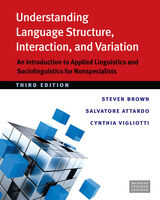
Understanding Language Structure, Interaction, and Variation is an introduction to the study of language and applied linguistics for students who have had a minimum of exposure to the discipline of linguistics. Using clear, easy-to-understand explanations and examples, this text avoids the in-depth theoretical coverage found in texts written for those who specialize in linguistics or SLA. As a result, this book is perfect for students whose chosen fields require them to be acquainted with the ways language works--such as future teachers, psychologists, sociologists, and anthropologists--but who do not intend to become linguists. The text is also suitable for English or ESL/EFL teachers who need a reference volume about various aspects of language, particularly as it applies to teaching. Each chapter includes research projects and further readings.
The third edition of Understanding Language Structure, Interaction, and Variation features a new design and reorganization. All content has been significantly revised and updated. Each chapter also debunks a common language myth and now incorporates exercises that, for prior editions, appeared in a supplementary workbook. Extra practice for students is available online, as is additional materials for teachers. (There is no workbook for the third edition.)
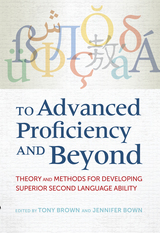
To Advanced Proficiency and Beyond: Theory and Methods for Developing Superior Second Language Ability addresses an important issue in Second Language Acquisition—how to help learners progress from Intermediate and Advanced proficiency to Superior and beyond. Due to the pressures of globalization, American society encounters an ever-increasing demand for speakers with advanced language abilities. This volume makes available cutting edge research on working memory and cognition and empirical studies of effective teaching. In addition it can serve as a practical handbook for seasoned and pre-professional instructors alike. The bringing together of the latest in second language acquisition theory, decades of empirical research, and practical classroom application makes for an unprecedented volume examining the achievement of Superior-level foreign language proficiency.

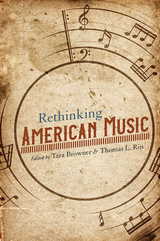
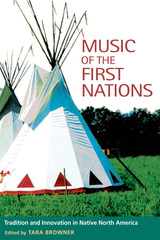
This unique anthology presents a wide variety of approaches to an ethnomusicology of Inuit and Native North American musical expression. Contributors include Native and non-Native scholars who provide erudite and illuminating perspectives on aboriginal culture, incorporating both traditional practices and contemporary musical influences. Gathering scholarship on a realm of intense interest but little previous publication, this collection promises to revitalize the study of Native music in North America, an area of ethnomusicology that stands to benefit greatly from these scholars' cooperative, community-oriented methods.
Contributors are T. Christopher Aplin, Tara Browner, Paula Conlon, David E. Draper, Elaine Keillor, Lucy Lafferty, Franziska von Rosen, David Samuels, Laurel Sercombe, and Judith Vander.
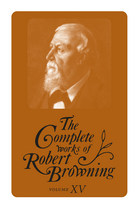
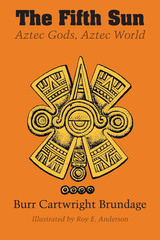
The ancient Aztecs dwelt at the center of a dazzling and complex cosmos. From this position they were acutely receptive to the demands of their gods. The Fifth Sun represents a dramatic overview of the Aztec conception of the universe and the gods who populated it—Quetzalcoatl, the Plumed Serpent; Tezcatlipoca, the Smoking Mirror; and Huitzilopochtli, the Southern Hummingbird. Burr Cartwright Brundage explores the myths behind these and others in the Aztec pantheon in a way that illuminates both the human and the divine in Aztec life.
The cult of human sacrifice is a pervasive theme in this study. It is a concept that permeated Aztec mythology and was the central preoccupation of the aggressive Aztec state. Another particularly interesting belief explored here is the “mask pool,” whereby gods could exchange regalia and, thus, identities.
This vivid and eminently readable study also covers the use of hallucinogens; cannibalism; the calendars of ancient Mexico; tlachtli, the life-and-death ball game; the flower wars; divine transfiguration; and the evolution of the war god of the Mexica. A splendid introduction to Aztec religion, The Fifth Sun also contains insights for specialists in ethnohistory, mythology, and religion.
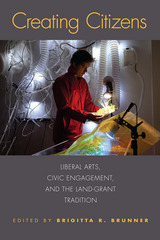
The nine essays in Creating Citizens offer structures for incorporating CCE initiatives into university programs, instructional methods and techniques, and numerous case studies and examples undertaken at Auburn University but applicable at any university. Many contributors describe their own rewarding experiences with CCE and emphasize the ways outreach efforts reinvigorate their teaching or research.
Creating Citizens recounts the foundation of land-grant institutions by the Morrill Act of 1862. Their mission is to instruct in agriculture, military science, and mechanics, but these goals augmented rather than replaced an education in the classics, or liberal arts. Land-grant institutions, therefore, have a special calling to provide a broad spectrum of society with an education that not only enriched the personal lives of their students, but the communities they are a part of. Creating Citizens demonstrates the important opportunities CCE instruction represents to any university but are especially close to the heart of the mission of land-grant colleges.
In open societies, the role and mission of public institutions of higher learning that are supported by public subsidies are perennial subjects of interest and debate. Creating Citizens provides valuable insights of interest to educators, education administrators, students, and policy makers involved in the field of higher education.

Ancient Greek thought is the essential wellspring from which the intellectual, ethical, and political civilization of the West draws and to which, even today, we repeatedly return. In more than sixty essays by an international team of scholars, this volume explores the full breadth and reach of Greek thought--investigating what the Greeks knew as well as what they thought about what they knew, and what they believed, invented, and understood about the conditions and possibilities of knowing. Calling attention to the characteristic reflexivity of Greek thought, the analysis in this book reminds us of what our own reflections owe to theirs.
In sections devoted to philosophy, politics, the pursuit of knowledge, major thinkers, and schools of thought, this work shows us the Greeks looking at themselves, establishing the terms for understanding life, language, production, and action. The authors evoke not history, but the stories the Greeks told themselves about history; not their poetry, but their poetics; not their speeches, but their rhetoric. Essays that survey political, scientific, and philosophical ideas, such as those on Utopia and the Critique of Politics, Observation and Research, and Ethics; others on specific fields from Astronomy and History to Mathematics and Medicine; new perspectives on major figures, from Anaxagoras to Zeno of Elea; studies of core traditions from the Milesians to the various versions of Platonism: together these offer a sense of the unquenchable thirst for knowledge that marked Greek civilization--and that Aristotle considered a natural and universal trait of humankind. With thirty-two pages of color illustrations, this work conveys the splendor and vitality of the Greek intellectual adventure.
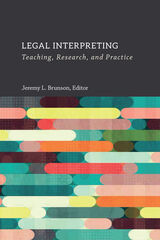
Each chapter features discussion questions and prompts that interpreter educators can use in the classroom. While intended as a foundational text for use in courses, this body of work also provides insight into the current state of the legal interpreting field and will be a valuable resource for scholars, practitioners, and consumers.

How do we frame decisions to use or abstain from military force? Who should do the killing? Do we need new paradigms to guide the use of force? And what does “victory” mean in contemporary conflict?
In many ways, these are timeless questions. But they should be revisited in light of changing circumstances in the twenty-first century. The post–Cold War, post-9/11 world is one of contested and fragmented sovereignty: contested because the norm of territorial integrity has shed some of its absolute nature, fragmented because some states do not control all of their territory and cannot defeat violent groups operating within their borders. Humanitarian intervention, preventive war, and just war are all framing mechanisms aimed at convincing domestic and international audiences to go to war—or not, as well as to decide who is justified in legally and ethically killing. The international group of scholars assembled in this book critically examine these frameworks to ask if they are flawed, and if so, how they can be improved. Finally, the volume contemplates what all the killing and dying is for if victory ultimately proves elusive.

The best-selling Alif Baa is the first volume of the Al-Kitaab Arabic language program third edition is now available as a multimedia textbook with added functionality and ease of use for students and teachers. In this edition of the introduction to Arabic letters and sounds, English-speaking students will find an innovative integration of colloquial and formal (spoken and written) Arabic. Together, the book and new companion website provide learners with all the material necessary to learn the sounds of Arabic, write its letters, and begin speaking Arabic, including interactive, self-correcting exercises to enhance learning. The companion website also gives instructors additional online grading options.
This multimedia textbook includes Alif Baa, Third Edition and a Companion Website Access Key for Alif Baa, Third Edition.
FEATURES• Four-color design throughout the book features over 100 illustrations and photographs
• Gives learners and instructors color-coded options for the variety of language they wish to learn in speaking: Egyptian, Levantine, or formal Arabic (MSA)
• Introduces over 200 basic vocabulary words in all three forms of spoken and written Arabic side by side, including expressions for polite social interaction, and activates them in interactive homework exercises and classroom groupwork
• Includes video dialogues in Egyptian and Levantine, filmed in Cairo and Damascus
• Includes video footage of an Arabic calligrapher, capsules on Arabic culture, and images of street signs from Morocco, Egypt, and Lebanon
• Includes new English-Arabic and Arabic-English glossaries, searchable in the companion website
• Companion website features a fully integrated set of interactive exercises with all the video and audio materials and additional online course management and grading options for teachers
Alif Baa provides the essential first 20-25 contact (classroom) hours of the Al-Kitaab program, accompanied by 40-50 homework hours. Students who complete Alif Baa should reach a novice-intermediate to novice-high level of proficiency.
Companion Website Minimum System Requirements:WindowsOS: Microsoft Windows 98, NT, 2000, ME, XP, Vista, 7CPU: 233MHz Pentium BasedRAM: 128MBDISPLAY:1024x768, color displayBROWSER: Microsoft Internet Explorer 7.0 or higher, or Firefox version 3.0 or higherCONNECTION SPEED: A high-speed connection with throughput of 256 Kbps or more is recommended to use audio and video components.EQUIPMENT: You will need speakers or a headset to listen to audio and video components.PLUG-INS: You must have the latest version of Adobe Flash Player.
MacintoshOS: Mac OSXCPU: 233MHz Power MacintoshRAM: 128MBDISPLAY:1024x768, color displayBROWSER: Firefox version 3.0 or higher, or Sarari 3.0 or higherCONNECTION SPEED: A high-speed connection with throughput of 256 Kbps or more is recommended to use audio and video components. EQUIPMENT: You will need speakers or a headset to listen to audio and video components.PLUG-INS: You must have the latest version of Adobe Flash Player.
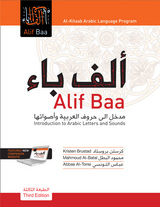
E-Textbooks are now available to purchase or rent through VitalSource.com! Please visit VitalSource for more information on pricing and availability.
As of January 1, 2021, Smart Sparrow Companion Websites are no longer available for any of our textbook programs.
New companion websites are coming soon, and will be hosted by Lingco. Instructors may sample the new companion websites now by visiting GUPTextbooks.com/companionwebsites.The full websites will be available for fall 2021 course adoption. Homework exercises are included in the textbook. Print answer keys are available for purchase through GUP. Ebook answer keys are available on the GUP website and VitalSource.com.
Alif Baa is the first volume of the best-selling Al-Kitaab Arabic Language Program, now in its third edition. In this edition of Alif Baa: Introduction to Arabic Letters and Sounds, English-speaking students will use the integrated method of learning colloquial and formal (spoken and written) Arabic together. Alif Baa provides learners with all the material necessary to learn the sounds of Arabic, write its letters, and begin speaking Arabic.
NEW: Audio and video content needed to complete the homework exercises is available to stream online for free on AlKitaabTextbook.com. (Note: DVDs that once featured the audio and video are now obsolete and no longer included in the books.)
FEATURES
• Four-color design throughout the book features over 100 illustrations and photographs• Gives learners and instructors color-coded options for the variety of language they wish to learn in speaking: Egyptian, Levantine, or formal Arabic (MSA)• Introduces over 200 basic vocabulary words in all three forms of spoken and written Arabic side by side, including expressions for polite social interaction, and activates them in interactive homework exercises and classroom groupwork• Includes video dialogues in Egyptian and Levantine, filmed in Cairo and Damascus, streaming on AlKitaabTextbook.com• Includes video footage of an Arabic calligrapher, capsules on Arabic culture, and images of street signs from Morocco, Egypt, and Lebanon, streaming on AlKitaabTextbook.com• Includes English-Arabic and Arabic-English glossaries
Alif Baa provides the essential first 20-25 contact (classroom) hours of the Al-Kitaab Arabic Language Program, accompanied by 40-50 homework hours. Students who complete Alif Baa should reach a novice-intermediate to novice-high level of proficiency.
Instructors may request complimentary print or digital Teacher’s Edition exam or desk copies, which include the answer key. To request access to any of the Teacher’s Edition Vital Source eTextbooks, instructors may visit VitalSource.com and select “Faculty Sampling” in the upper right corner. Please note: While answer keys are sold separately from the Student’s Edition, the corresponding answer key is included in the Teacher’s Edition.
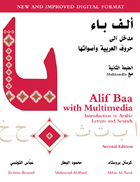
NEW AND IMPROVED DIGITAL FORMAT!
Since the release of the second edition of Alif Baa with DVDs in the fall of 2004, thousands of Arabic language learners have benefited from the integrated textbook and DVDs. This new version—Alif Baa with Multimedia—functions even better and features a new and improved digital format.
The content of Alif Baa with Multimedia, Second Edition, including the text and all of the audio and video on the disk, is exactly the same as that of Alif Baa with DVDs, Second Edition. Only the format of the disk has changed so that all files will be easy to play using the free Adobe Flash Player. All units are now included on only one disk. Teachers and students may use both versions of the textbook side-by-side in the classroom and notice no difference in content or appearance. It should not affect the learning experience or require teachers to do any additional preparation.
FEATURES• Introduces about 150 basic vocabulary words, including conventional forms of politeness and social greetings• Introduces a range of Arabic from colloquial to standard in authentic contexts• Includes video footage of an Arabic calligrapher, capsules on Arabic culture, and images of street signs from Morocco, Egypt, and Lebanon• Provides the essential first 20-25 contact hours of the Al-Kitaab program
The DVD that accompanies Alif Baa with Multimedia plays in any computer’s DVD drive. In order to view the files, you will need to download and install the free Flash Player from Adobe’s website.
System Requirements:
Windows• 450 MHz Intel Pentium II (or compatible) processor• MS Windows 2000, Windows XP, or Windows Vista• 128MB of RAM and 128MB of VRAM• Computer with DVD drive• Headphones or speakers• Flash Player (free download from http://www.adobe.com/products/flashplayer/)
Mac• 500 MHz PowerPC G3 or 1.33 GHz Intel Core Duo processor• Mac OS X v10.4 or 10.5• 128MB of RAM and 128MB of VRAM• Computer with DVD drive• Headphones or speakers• Flash Player (free download from http://www.adobe.com/products/flashplayer/)
Georgetown University Press is not able to provide technical support for the CDs and DVDs that accompany the Al-Kitaab series.

Alif Baa is the first volume of the best-selling Al-Kitaab Arabic Language Program, now in its third edition. In this edition of Alif Baa: Introduction to Arabic Letters and Sounds with Website, English-speaking students will use the integrated method of learning colloquial and formal (spoken and written) Arabic together. Alif Baa provides learners with all the material necessary to learn the sounds of Arabic, write its letters, and begin speaking Arabic.The accompanying companion website–included with the book–offers fully integrated exercises to use alongside the text.
FEATURES
•Four-color design throughout the book with over 100 illustrations and photographs
•Gives learners and instructors color-coded options for the variety of language they wish to learn in speaking: Egyptian, Levantine, or formal Arabic (MSA)
•Introduces over 200 basic vocabulary words in all three forms of spoken and written Arabic side by side, including expressions for polite social interaction, and activates them in interactive homework exercises and classroom groupwork
•Includes video dialogues in Egyptian and Levantine, filmed in Cairo and Damascus, streaming on the Publisher’s website
•Includes video footage of an Arabic calligrapher, capsules on Arabic culture, and images of street signs from Morocco, Egypt, and Lebanon, streaming on the Publisher’s website
•Includes English-Arabic and Arabic-English glossaries
Alif Baa provides the essential first 20-25 contact (classroom) hours of the Al-Kitaab Arabic Language Program, accompanied by 40-50 homework hours. Students who complete Alif Baa should reach a novice-intermediate to novice-high level of proficiency.
For Instructors: Separate print Teacher’s Editions of the Al-Kitaab Arabic Language Program are no longer available. Instead, instructors should submit exam and desk copy requests using ISBN 978-1-64712-181-5. Instructors may request an answer key, which contains the answers to exercises found in the textbook, separately.

Alif Baa is the first volume of the best-selling Al-Kitaab Arabic Language Program, now in its third edition. In this edition of Alif Baa: Introduction to Arabic Letters and Sounds with Website, English-speaking students will use the integrated method of learning colloquial and formal (spoken and written) Arabic together. Alif Baa provides learners with all the material necessary to learn the sounds of Arabic, write its letters, and begin speaking Arabic.The accompanying companion website–included with the book–offers fully integrated exercises to use alongside the text.
FEATURES
•Four-color design throughout the book with over 100 illustrations and photographs
•Gives learners and instructors color-coded options for the variety of language they wish to learn in speaking: Egyptian, Levantine, or formal Arabic (MSA)
•Introduces over 200 basic vocabulary words in all three forms of spoken and written Arabic side by side, including expressions for polite social interaction, and activates them in interactive homework exercises and classroom groupwork
•Includes video dialogues in Egyptian and Levantine, filmed in Cairo and Damascus, streaming on the Publisher's website
•Includes video footage of an Arabic calligrapher, capsules on Arabic culture, and images of street signs from Morocco, Egypt, and Lebanon, streaming on the Publisher's website
•Includes English-Arabic and Arabic-English glossaries
Alif Baa provides the essential first 20-25 contact (classroom) hours of the Al-Kitaab Arabic Language Program, accompanied by 40-50 homework hours. Students who complete Alif Baa should reach a novice-intermediate to novice-high level of proficiency.
For Instructors: Separate print Teacher's Editions of the Al-Kitaab Arabic Language Program are no longer available. Instead, instructors should submit exam and desk copy requests using ISBN 978-1-64712-181-5. Instructors may request an answer key, which contains the answers to exercises found in the textbook, separately.
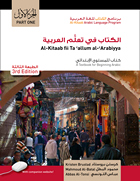
E-Textbooks are now available to purchase or rent through VitalSource.com! Please visit VitalSource for more information on pricing and availability.
As of January 1, 2021, Smart Sparrow Companion Websites are no longer available for any of our textbook programs. New companion websites are coming soon, and will be hosted by Lingco. Instructors may sample the new companion websites now by visiting GUPTextbooks.com/companionwebsites. The full websites will be available for fall 2021 course adoption.
Homework exercises are included in the textbook. Print answer keys are available for purchase through GUP. Ebook answer keys are available on the GUP website and VitalSource.com.
Al-Kitaab Part One, Third Edition is the second book in the bestselling Al-Kitaab Arabic Language Program. Part One uses an integrated approach to develop skills in formal and colloquial Arabic, including reading, listening, speaking, writing, and cultural knowledge. This comprehensive program is designed for students in the early stages of learning Arabic.
NEW: Audio and video content needed to complete the homework exercises is available to stream online for free on AlKitaabTextbook.com. (DVDs that once featured the audio and video are now obsolete and no longer included in the books.)
FEATURES
• Three varieties of Arabic—Egyptian, Levantine, and formal Arabic—presented using color-coded words and phrases• Over 400 vocabulary words in three forms of Arabic, side by side• Grammar explanations and activation drills, including discussions about colloquial and formal similarities and differences• Authentic texts that develop reading comprehension skills • Video dialogues and stories from everyday life in Egyptian, formal Arabic, and Levantine to reinforce vocabulary in culturally rich contexts, available on AlKitaabTextbook.com• Presents the story of Maha and Khalid in formal Arabic and Egyptian, and Nasreen and Tariq in Levantine• Arabic-English and English-Arabic glossaries, reference charts, and a grammar index
Instructors may request complimentary print or digital Teacher’s Edition exam or desk copies, which include the answer key. To request access to any of the Teacher’s Edition Vital Source eTextbooks, instructors may visit VitalSource.com and select “Faculty Sampling” in the upper right corner. Please note: While answer keys are sold separately from the Student’s Edition, the corresponding answer key is included in the Teacher’s Edition.

E-Textbooks are now available to purchase or rent through VitalSource.com! Please visit VitalSource for more information on pricing and availability.
As of January 1, 2021, Smart Sparrow Companion Websites are no longer available for any of our textbook programs. New companion websites are coming soon, and will be hosted by Lingco. Instructors may sample the new companion websites now by visiting GUPTextbooks.com/companionwebsites. The full websites will be available for fall 2021 course adoption.
Homework exercises are included in the textbook. Print answer keys are available for purchase through GUP. Ebook answer keys are available on the GUP website and VitalSource.com.
Al-Kitaab Part Two, Third Edition is the third book in the bestselling Al-Kitaab Arabic Language Program textbook series. Part Two focuses on strengthening reading and writing skills while continuing to grow conversation skills. This comprehensive program is designed for students in second-year or equivalent Arabic courses.
NEW: Audio and video content needed to complete the homework exercises is available to stream for free on AlKitaabTextbook.com. (DVDs that once featured the audio and video are now obsolete and no longer included in the books.)
FEATURES of Al-Kitaab Part Two, Third Edition
• Three varieties of Arabic—Egyptian, Levantine, and formal Arabic—presented using color-coded words and phrases• Extensive grammar explanations and activation drills, including discussions about colloquial and formal similarities and differences• Authentic texts that develop reading comprehension skills • Video dialogues and stories from everyday life in both Egyptian and Levantine to reinforce vocabulary in culturally rich contexts, available to stream on AlKitaabTextbooks.com• Continues the story of Maha and Khalid in formal Arabic and Egyptian, and Nasreen and Tariq in Levantine• Arabic–English and English-Arabic glossaries, reference charts, and a grammar index
(Cover image (c) Melissa A. Wall. Used with permission.)
Instructors may request complimentary print or digital Teacher’s Edition exam or desk copies, which include the answer key. To request access to any of the Teacher’s Edition Vital Source eTextbooks, instructors may visit VitalSource.com and select “Faculty Sampling” in the upper right corner. Please note: While answer keys are sold separately from the Student’s Edition, the corresponding answer key is included in the Teacher’s Edition.

Al-Kitaab Part One, Third Edition is the second book in the bestselling Al-Kitaab Arabic Language Program. Together with its Companion Website, Part One uses an integrated approach to develop skills in formal and colloquial Arabic, including reading, listening, speaking, writing, and cultural knowledge. This comprehensive program is designed for students in the early stages of learning Arabic.
FEATURES of Al-Kitaab Part One, Third Edition with Companion Website• Students receive an access code for the Companion Website (www.alkitaabtextbook.com)• Teachers who receive desk or exam copies may request complimentary Companion Website access at any time at www.alkitaabtextbook.com• Companion Website with interactive, automatically scored exercises, all the audio and video materials, and additional online course-management and grading options for teachers• Three varieties of Arabic—Egyptian, Levantine, and formal Arabic—presented using color-coded words and phrases• Over 400 vocabulary words in three forms of Arabic, side by side• Grammar explanations and activation drills, including discussions about colloquial and formal similarities and differences• Authentic texts that develop reading comprehension skills • Video dialogues and stories from everyday life in Egyptian, formal Arabic, and Levantine to reinforce vocabulary in culturally rich contexts• Presents the story of Maha and Khalid in formal Arabic and Egyptian, and Nasreen and Tariq in Levantine• Arabic–English and English–Arabic glossaries, reference charts, and a grammar index

The final and most advanced volume of the Al-Kitaab Arabic textbook program, Part Three is intended to help learners reach a superior level of proficiency by expanding vocabulary and providing paragraph-level activities in reading, writing, and speaking. More than thirty authentic texts by writers from across the Arab world address a range of political, social, religious, and literary themes and represent a range of genres, styles, and periods. Although the book focuses primarily on modern Arabic, classical Arabic texts have been incorporated into some of the lessons to introduce students to the continuity of the language throughout its history.
Like previous books in the series, Part Three presents vocabulary-building drills and contextualized explanations of grammar, with exercises designed to push students toward independent learning.
The original text and audio are now bound together in one volume along with new video material on DVD that continues the story of Maha and Khalid in Egyptian Arabic, making Part Three an invaluable textbook and reader.
Features:• Guides learners to the superior level of proficiency• Strengthens reading skills• Increases vocabulary acquisition• Refines and expands knowledge of sentence structure and the Arabic verb system• Provides extensive writing activities• Widens cultural background• Includes more than thirty authentic texts by writers from across the Arab world• Audio tracks have been remastered as MP3 files, recorded on one CD, and bound into the book• Includes all new video material on DVD that continues the story of Maha and Khalid• New video material continues instruction in the Egyptian dialect

Al-Kitaab Part One, Third Edition with Website is the second book in the bestselling Al-Kitaab Arabic Language Program. Part One uses an integrated approach to develop skills in formal and colloquial Arabic, including reading, listening, speaking, writing, and cultural knowledge. This comprehensive program is designed for students in the early stages of learning Arabic. The accompanying companion website–included with the book–offers fully integrated exercises to use alongside the text.
FEATURES
• Three varieties of Arabic—Egyptian, Levantine, and formal Arabic—presented using color-coded words and phrases
• Over 400 vocabulary words in three forms of Arabic, side by side
• Grammar explanations and activation drills, including discussions about colloquial and formal similarities and differences
• Authentic texts that develop reading comprehension skills
• Video dialogues and stories from everyday life in Egyptian, formal Arabic, and Levantine to reinforce vocabulary in culturally rich contexts, available on the Publisher’s website
• Presents the story of Maha and Khalid in formal Arabic and Egyptian, and Nasreen and Tariq in Levantine
• Arabic-English and English-Arabic glossaries, reference charts, and a grammar index
For Instructors: Separate print Teacher’s Editions of the Al-Kitaab Arabic Language Program are no longer available. Instead, instructors should submit exam and desk copy requests using ISBN 978-1-64712-187-7. Instructors may request an answer key, which contains the answers to exercises found in the textbook, separately.

Al-Kitaab Part One, Third Edition with Website is the second book in the bestselling Al-Kitaab Arabic Language Program. Part One uses an integrated approach to develop skills in formal and colloquial Arabic, including reading, listening, speaking, writing, and cultural knowledge. This comprehensive program is designed for students in the early stages of learning Arabic. The accompanying companion website–included with the book–offers fully integrated exercises to use alongside the text.
FEATURES
• Three varieties of Arabic—Egyptian, Levantine, and formal Arabic—presented using color-coded words and phrases
• Over 400 vocabulary words in three forms of Arabic, side by side
• Grammar explanations and activation drills, including discussions about colloquial and formal similarities and differences
• Authentic texts that develop reading comprehension skills
• Video dialogues and stories from everyday life in Egyptian, formal Arabic, and Levantine to reinforce vocabulary in culturally rich contexts, available on the Publisher’s website
• Presents the story of Maha and Khalid in formal Arabic and Egyptian, and Nasreen and Tariq in Levantine
• Arabic-English and English-Arabic glossaries, reference charts, and a grammar index
For Instructors: Separate print Teacher’s Editions of the Al-Kitaab Arabic Language Program are no longer available. Instead, instructors should submit exam and desk copy requests using ISBN 978-1-64712-187-7. Instructors may request an answer key, which contains the answers to exercises found in the textbook, separately.

Al-Kitaab Part Two, Third Edition with Website is the third book in the bestselling Al-Kitaab Arabic Language Program textbook series. Part Two focuses on strengthening reading and writing skills while continuing to grow conversation skills. This comprehensive program is designed for students in second-year or equivalent Arabic courses. The accompanying companion website–included with the book–offers fully integrated exercises to use alongside the text.
FEATURES
• Three varieties of Arabic—Egyptian, Levantine, and formal Arabic—presented using color-coded words and phrases
• Extensive grammar explanations and activation drills, including discussions about colloquial and formal similarities and differences
• Authentic texts that develop reading comprehension skills
• Video dialogues and stories from everyday life in both Egyptian and Levantine to reinforce vocabulary in culturally rich contexts, available to stream on the Publisher’s website
• Continues the story of Maha and Khalid in formal Arabic and Egyptian, and Nasreen and Tariq in Levantine
• Arabic-English and English-Arabic glossaries, reference charts, and a grammar index
For Instructors: Separate print Teacher’s Editions of the Al-Kitaab Arabic Language Program are no longer available. Instead, instructors should submit exam and desk copy requests using ISBN 978-1-64712-191-4. Instructors may request an answer key, which contains the answers to exercises found in the textbook, separately.

eBook answer keys are now available on VitalSource.com! Please visit their website for more information on pricing and availability.
This answer key is to be used with Alif Baa: Introduction to Arabic Letters and Sounds, Third Edition. Please note that this answer key contains answers for exercises that are in the book. It does not contain answers for exercises formerly found on the Smart Sparrow Companion Website, which is no longer available after January 1, 2021.
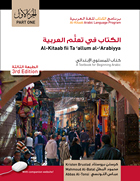
eBook Answer Keys are now available through VitalSource.com. Please visit their website for more information on pricing and availability.
This answer key is to be used with Al-Kitaab fii Tacallum al-cArabiyya: A Textbook for Beginning Arabic: Part One, Third Edition. Please note that this answer key contains answers for exercises that are in the book. It does not contain answers for exercises formerly on the Smart Sparrow Companion Website, which is no longer available after January 1, 2021.
READERS
Browse our collection.
PUBLISHERS
See BiblioVault's publisher services.
STUDENT SERVICES
Files for college accessibility offices.
UChicago Accessibility Resources
home | accessibility | search | about | contact us
BiblioVault ® 2001 - 2024
The University of Chicago Press









